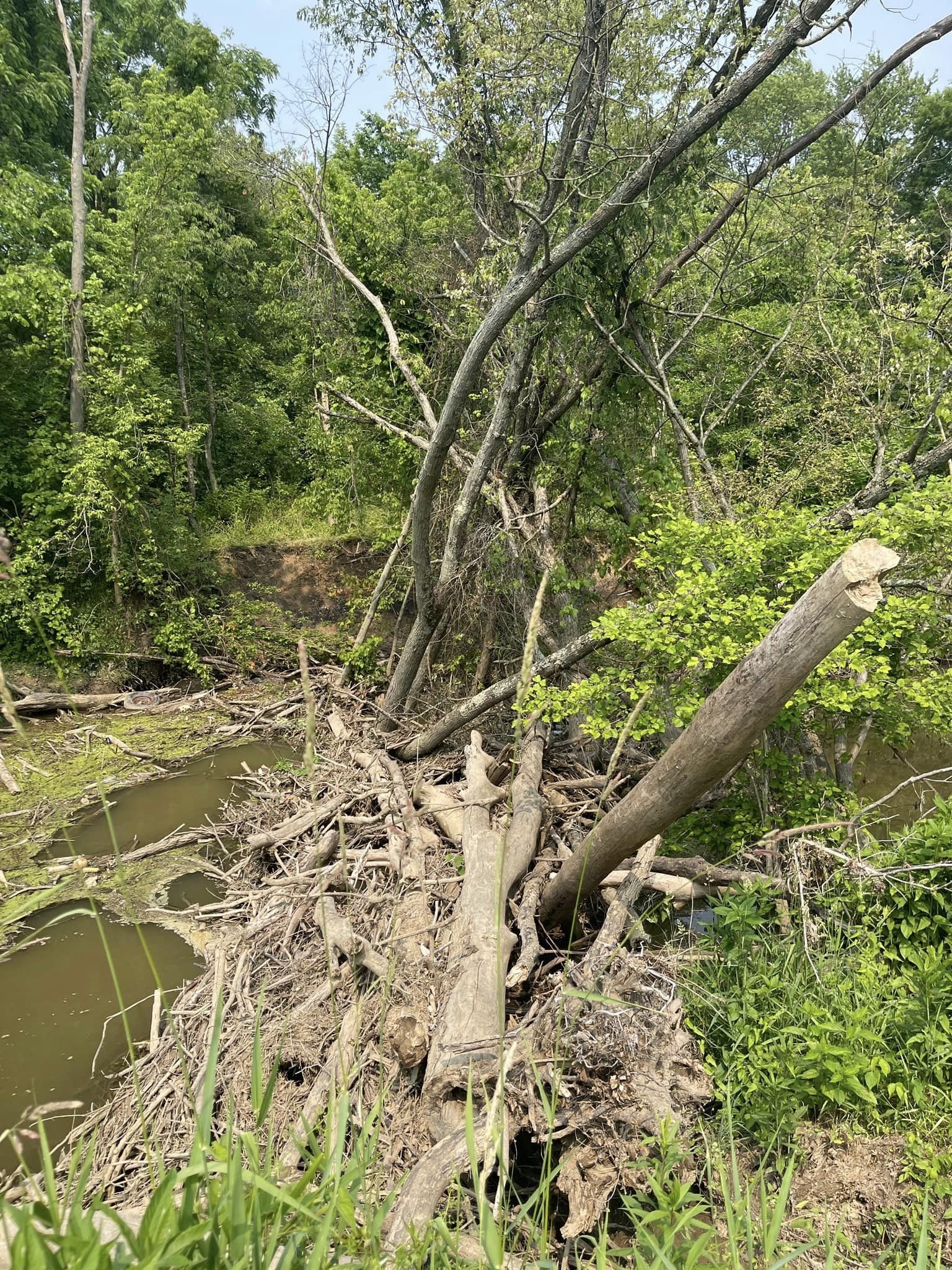Log jams create public safety and erosion issues; Ashland SWCD can help
When a creek on your property looks like a timber yard after a windstorm, it’s not just bad landscaping — it’s a public-safety issue. Fallen trees, tangled branches and accumulated brush create log jams that can divert water onto roads, wedge against bridges and chew away at stream banks. For Ashland County landowners in the Muskingum Watershed, help is available: the Debris Removal Program, a cost-share partnership between the Ashland Soil and Water Conservation District and the Muskingum Watershed Conservancy District.
Think of the program as a focused intervention for streams in crisis. The DRP’s intent is simple and practical: remove log jams that are causing flooding of roadways, contributing to debris buildup at bridges, or producing significant erosion of stream banks. This is not routine stream maintenance. It is aimed squarely at big, problematic jams that pose a clear threat to public health and safety or to critical infrastructure.
Clearing a log jam restores water to its channel so it flows where it should. That lowers the chances that a creek will spill over a low road, forces less water against bridge supports and reduces erosive forces that rob landowners of valuable soil. A
Here’s how the DRP works:.
Who can apply
Applications must be made by political subdivisions of the state or the federal government — typically townships, counties or SWCDs. Private individuals cannot apply directly. Ashland SWCD has successfully assisted with multiple landowners in the past and can help shepherd a request through the process.
Funding and cost share
Grant awards are based on a contractor’s estimate to remove the debris. A minimum 10 percent cost share is required from each applicant. That share can include in‑kind contributions such as on-site labor for debris removal and disposal, administrative or project-management work — whatever is reasonable to meet the requirement.
The maximum DRP award is capped at $20,000 per project location. That means a single site can’t be sliced into phases to chase more money. If the job looks like it will top that figure, applicants should consider the Muskingum Watershed Conservancy District’s Partners in Watershed Management grant; applications for PWM are due each year on Sept. 1.
How to get the ball rolling
Applications may be submitted any time during the year and will be reviewed by MWCD staff. Expect a site visit so staff can see the situation firsthand; after that review, applicants will be notified if they have tentative acceptance into the program. Projects move forward only after a Debris Removal Grant Agreement is executed.
Remember: the DRP is intended for significant debris fields and logjams that pose or will clearly pose a threat to public health and safety. It isn’t a routine channel maintenance fund. That practical focus helps ensure the available dollars go where they’ll do the most good — keeping roads passable, bridges intact and banks from disappearing into the creek.
Prioritization and timing
Requests are normally handled in the order they’re received. If requests outpace available funding, MWCD will rank projects and fund them by priority. Generally, debris fields and logjams located upstream of Muskingum Flood Control System structures get top billing. Applicants may submit only one debris removal grant at a time.
Project scope and payments
Project scope is negotiated and agreed to as part of the Debris Removal Grant Agreement. Keep in mind the DRP pays in a lump sum only; change orders and scope modifications are normally not approved. Know what you want done, get a contractor estimate, and be prepared to stick to the plan.
Why this matters to you
Removing a major log jam is an investment in your property and your neighbors’ safety. It reduces the likelihood water will take the scenic route over the county road, protects bridges and other critical structures, and halts the bank erosion that can swallow fence lines, cropland and valuable topsoil. It can restore habitat for fish and aquatic insects and make streams safer and more enjoyable for boating and fishing. In short, clearing the big jams keeps your land working and your community moving.
Get started
If a stream on your Ashland County property is jammed and lies within the jurisdictional boundaries of the Muskingum Watershed, don’t wait for the next heavy rain. Call Joe Christner at Ashland SWCD to discuss the situation and schedule a site visit: 419-281-7645 or jchristner@ashlandcounty.org
.It’s practical. It’s local. And if you’ve ever watched a road turn into a river because a creek couldn’t be bothered to behave, it’s downright satisfying. Your stream (and your sanity) will thank you.


